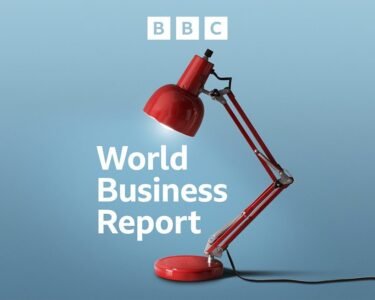Restaurant Brands International (TSX:QSR) — parent of Tim Hortons, Burger King, Popeyes, and Firehouse Subs — has established itself as a globally diversified QSR powerhouse, boasting around 32,000 restaurants across +120 countries. However, 2025 presents a mixed backdrop of macro pressures and strategic opportunities.
Restaurant Brands’s recent performance and valuation
In the first quarter (Q1) of 2025, Restaurant Brands reported system-wide sales growth of 2.8% year over year, though comparable sales were nearly flat at 0.1%. Despite modest top-line growth of 21% to US$2.1 billion, adjusted operating income fell marginally by 0.2% to US$539 million. However, adjusted earnings before interest, taxes, depreciation, and amortization (EBITDA), a cash flow proxy, rose 2.4% to US$642 million. Net leverage was 4.7 times, down from 4.8 times a year ago.
At $90 per share at writing, its dividend yield is nearly 3.8%, with its trailing-12-month dividend supported by a payout ratio of 85% of free cash flow. Based on the recent quotation, the analyst consensus price target represents an 11% discount or nearly 13% near-term upside potential, suggesting a fairly valued stock.
QSR tailwinds in 2025
- International expansion: Asia, Latin America, and Middle East markets could provide higher growth prospects.
- Operational efficiencies: Centralized procurement and franchised model (about 98%) minimize capital spending burden and help absorb input cost inflation.
- Technology and promotions: Advances in digital ordering, kiosks, delivery, artificial intelligence voice bots, and promotions (e.g. value meals at Burger King) continue to stimulate traffic and offset labour shortages.
QSR headwinds to watch
- Consumer squeeze: Elevated inflation, tariff‑related wage pressures, and tightened household spending in key markets (notably the U.S.) may continue to depress QSR traffic.
- Currency volatility: QSR reports in U.S. dollars, so a weak Canadian dollar, for example, would hurt its results.
- Underperforming brands: Burger King U.S. same‑store sales slipped 1.3%, and Popeyes U.S. declined 4%, though revitalization efforts are underway.
- Debt burden: With US$20 billion in liabilities, Restaurant Brands carries significant debt — albeit with strong cash flow — but remains exposed if macro conditions are to worsen.
Verdict: A potential buy for income and long-term growth
For income-oriented Canadian investors, Restaurant Brands offers a “not bad” dividend yield of close to 3.8% from a globally diversified portfolio. Notably, the dividend safety relies on its ability to maintain or grow its cash flows. Currently, the valuation looks reasonable at a blended price-to-earnings (P/E) ratio of about 18.8 and a blended price-to-EBITDA ratio of about 10.8 — both valuations suggest a discount to its historical levels. International expansion combined with tech efficiencies should position the stock for a rebound if U.S. consumer spending stabilizes.
That said, near-term risks from cost inflation, foreign exchange volatility, and uneven brand performance still need monitoring. Investors seeking income and long-term growth should find QSR stock a reasonable purchase today, but probably a safer buy on a potential market correction to the $80-per-share range.
The Foolish investor takeaway
Restaurant Brands International stock is not without risks, but for investors who believe in global fast-serve expansion, tech-driven margin enhancement, and a decent dividend, they could begin a starter position now under current market conditions and potentially add to their positions in the future.




